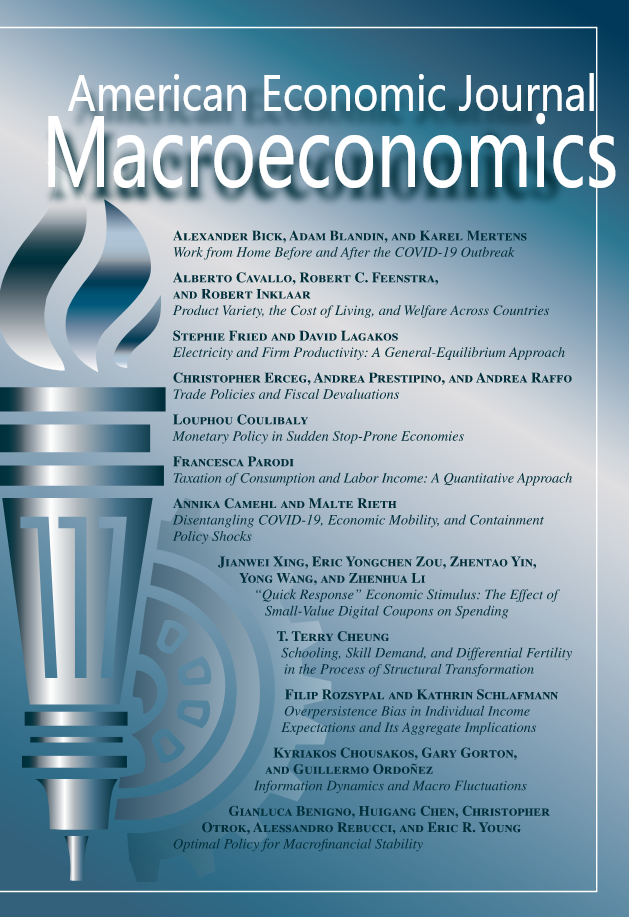摩擦性资产市场下的长期金融与投资
IF 5.7
1区 经济学
Q1 ECONOMICS
引用次数: 0
摘要
金融市场的交易摩擦对长期债券的影响大于对短期债券的影响,从而产生了一条向上倾斜的收益率曲线。在贸易摩擦较高的经济体中,长期融资成本更高,因此企业选择借款并投资于期限较短、生产率较低的项目。该理论指导了一种新的识别数据中流动性扩散斜率的方法。我们对美国的模型进行了测量和校准,反事实练习表明,贸易摩擦的变化可能对期限选择和投资产生重大影响。政策干预改善了流动性,降低了长期财务成本,促进了对长期项目的投资。(凝胶e43, e44, e52, g12, g21, g32, o16)本文章由计算机程序翻译,如有差异,请以英文原文为准。
Long-Term Finance and Investment with Frictional Asset Markets
Trading frictions in financial markets affect more long-term than short-term bonds, generating an upward-sloping yield curve. Long-term financing is more expensive in economies with higher trading frictions so firms choose to borrow and invest in shorter horizons and lower productivity projects. The theory guides a new identification of the slope of liquidity spread in the data. We measure and calibrate the model for the United States, and counterfactual exercises suggest that variations in trading frictions can have significant effects on maturity choices and investment. A policy intervention improves liquidity, reduces long-term financial costs, and promotes investment in longer-term projects. (JEL E43, E44, E52, G12, G21, G32, O16)
求助全文
通过发布文献求助,成功后即可免费获取论文全文。
去求助
来源期刊

American Economic Journal-Macroeconomics
ECONOMICS-
CiteScore
8.20
自引率
1.70%
发文量
58
期刊介绍:
American Economic Journal: Macroeconomics focuses on studies of aggregate fluctuations and growth, and the role of policy in that context. Such studies often borrow from and interact with research in other fields, such as monetary theory, industrial organization, finance, labor economics, political economy, public finance, international economics, and development economics. To the extent that they make a contribution to macroeconomics, papers in these fields are also welcome.
 求助内容:
求助内容: 应助结果提醒方式:
应助结果提醒方式:


